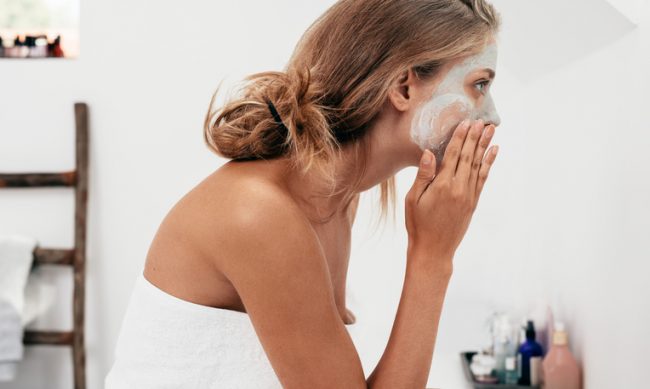Masks, peels and treatments, oh my! There are so many out there that it can be hard to know where to start when creating a beauty regimen. Any skincare expert knows that the processes leading up to and following a targeted skin treatment can be the difference between visible results and time wasted. But what if you’re still figuring out your skincare routine?
We’ve rounded up some helpful tips for choosing a treatment such as a face mask or peel as well as what you should know when using them.
Choosing the right treatment for different skin types
Browsing the beauty aisle for the perfect facial treatment can be an overwhelming experience. No one treatment can do it all, so the key here is to identify your top skin concerns. Do you have shiny, breakout-prone skin? You’ll want to find a clay or mud mask that can help draw out impurities and balance excess oil. Does your skin often feel tight and easily show redness or splotches? A hydrating mask is best for dry, sensitive skin. Looking for something to help brighten and firm? Facial peels are the more intensive, results-driven route.
If you answered yes to more than one of the above, take advantage of “multi-masking,” where you apply different treatments to the areas of the face that need them — for example, apply a clay mask to your often-oily T-zone and a hydrating mask to dry patches.
A word of caution on those DIY masks you see in your Pinterest feed: You’ll never be able to replicate the research and precision that go into formulating over-the-counter treatments, and certain ingredients can cause irreparable harm when used in the wrong amount or concentration. Whether packaged or DIY, always patch-test treatments on the skin on the inside of your wrist or elbow before applying to your face.
Skin prep secrets
Preparation is crucial when using any skincare treatment, but there is some debate around whether or not you should exfoliate before applying a treatment. Removing dead skin cells on the surface of the skin will allow your treatment to more easily penetrate the skin, right? The answer is a little more complex.
Definitely use a gentle cleanser to remove surface impurities that may prevent your treatment from working effectively, and it’s ok and even encouraged to use a mild face exfoliant before applying a mask.
Peels are a different story. These treatments are designed to exfoliate, so exfoliating beforehand may cause irritation and increased sensitivity. An additional pre-treatment step is steaming your face to open pores. You can do this by wetting a washcloth with warm water and laying it over your face for a few minutes until it cools.
One prep step you never want to skip is making sure your hands are clean before washing, exfoliating and applying a treatment. You can even use a clean brush to apply treatments to further prevent transfer of any dirt or grime from your hands to your face. Bonus: The brush application makes us feel like we’re at the spa!
Skin treatment dos & don’ts: frequency & length of application
If there’s one thing we can all agree we’d like more of, it’s time. In the case of face masks and peels, though, more time can do more harm than good. Leaving a treatment on for longer than recommended won’t give you extra benefits, and it may actually irritate your skin. Using a treatment more often than advised won’t give your skin time to recover and could leave you stuck with the same problem you were trying to remedy.
Read the directions on all products applied to your face. Some masks can be left on for 20 minutes, while a 1-minute face peel needs just 60 seconds to work its magic and should be removed promptly. Pro Tip: Always set a timer!
Post-treatment skin care steps
For the same reasons noted above, make sure you thoroughly rinse off your treatment before moving on to the next step in your routine. If you use a washcloth to remove the treatment, gently wipe, and be careful not to scrub. Scrubbing may lead to redness and irritation, especially on freshly treated skin that’s particularly sensitive.
Follow mask treatments with an antioxidant-rich serum and a gentle moisturizer. A peel should be followed by a revitalizing facial product with hyaluronic acid and plant stem cells to encourage rejuvenation and help soothe freshly treated skin.
Treating yourself to treatments such as masks and peels is the best way to achieve an at-home spa experience. Light some candles, dim the lights and use this relaxing time to unwind and ease the stress of your day.

